Carl Zeiss Touit Makro Planar 2.8/50mm T* Review

Introduction
The Carl Zeiss Touit Makro Planar 2.8/50mm T* is a new macro autofocus lens for Fujifilm XF and Sony NEX compact system cameras. The Carl Zeiss 50mm F2.8 lens boasts an angle-of-view range similar to that of a 75mm lens in a 35mm system. Other highlights include a close-focus point of 18cm and impressive 1:1 maximum reproduction, nine aperture blades for an almost circular bokeh, and an optical formula that comprises 14 lens elements in 11 groups groups, including two aspherical and two low dispersion elements. The Carl Zeiss Touit Makro Planar 2.8/50mm T* lens is priced at £780 / €755 / $999 in the UK, Europe and the US, respectively. The only difference between the Sony and Fujifilm versions is that the latter additionally features a traditional 1/3-step aperture ring.
Ease of Use
The Carl Zeiss Touit Makro Planar 2.8/50mm T* is a relatively compact prime lens, at least when compared to its DSLR equivalents, but it's still quite a bit bigger than a comparable Micro Four Thirds lens, for example. As you can see in the pictures below, it complements the Fujifilm X-T1 well, feeling just a little front-heavy. It more than matches the camera body in terms of its build quality thanks to the mostly metal design, with less important parts made in high-quality plastic in order to reduce weight.
 The Carl Zeiss Touit Makro Planar 2.8/50mm T* lens attached to the Fujifilm X-T1 camera
The Carl Zeiss Touit Makro Planar 2.8/50mm T* lens attached to the Fujifilm X-T1 camera
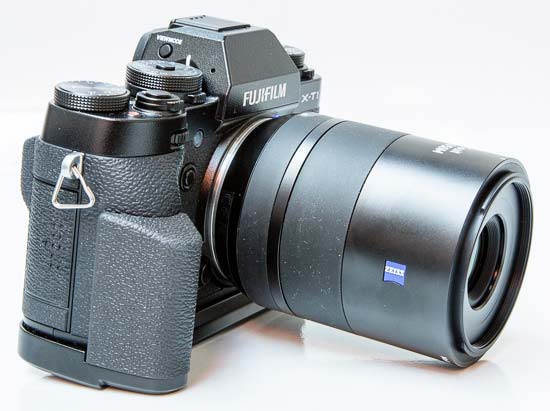 The Carl Zeiss Touit Makro Planar 2.8/50mm T* lens attached to the Fujifilm X-T1 camera
The Carl Zeiss Touit Makro Planar 2.8/50mm T* lens attached to the Fujifilm X-T1 camera
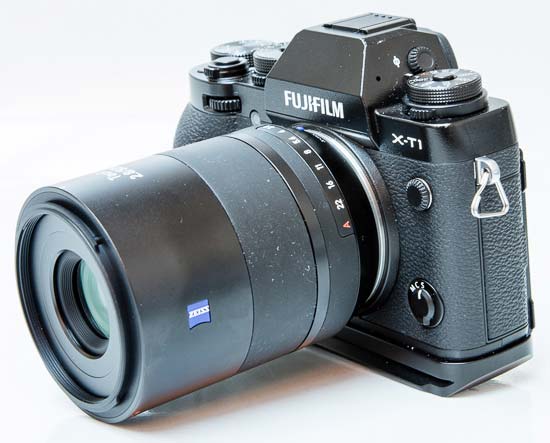 The Carl Zeiss Touit Makro Planar 2.8/50mm T* lens attached to the Fujifilm X-T1 camera
The Carl Zeiss Touit Makro Planar 2.8/50mm T* lens attached to the Fujifilm X-T1 camera
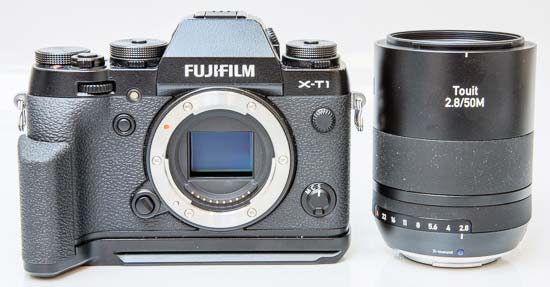 The Carl Zeiss Touit Makro Planar 2.8/50mm T* lens alongside the Fujifilm X-T1 camera
The Carl Zeiss Touit Makro Planar 2.8/50mm T* lens alongside the Fujifilm X-T1 camera
The Carl Zeiss Touit 50mm lens boasts a metal mount, high-grade plastic barrel and non-rotating 52mm filter thread. The focus ring is quite wide, smooth in action without being loose, and despite having a completely smooth surface, surprisingly tactile. There are no “hard stops” at either end of the 18cm-infinity focus range.
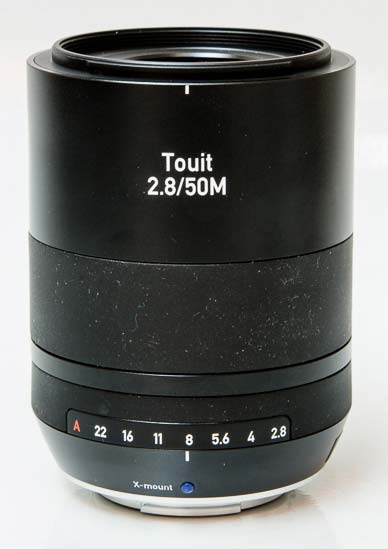 Front of the Carl Zeiss Touit Makro Planar 2.8/50mm T* lens
Front of the Carl Zeiss Touit Makro Planar 2.8/50mm T* lens
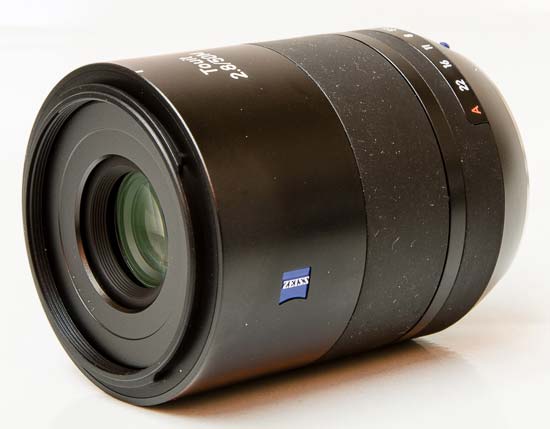 Side of the Carl Zeiss Touit Makro Planar 2.8/50mm T* lens
Side of the Carl Zeiss Touit Makro Planar 2.8/50mm T* lens
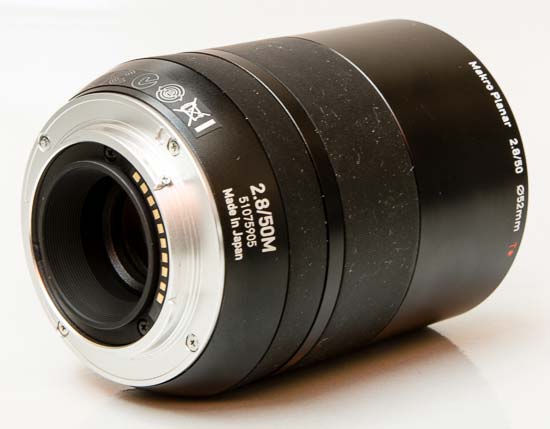 Side of the Carl Zeiss Touit Makro Planar 2.8/50mm T* lens
Side of the Carl Zeiss Touit Makro Planar 2.8/50mm T* lens
The Carl Zeiss Touit Makro Planar 2.8/50mm T* lens doesn't feature any distance and depth of field scales on the barrel, making it less suitable for manually pre-focusing if you find that the autofocus system is slowing you down, and there's no a focus limiter switch either. The focusing ring has a nice progressive action that makes manually focusing a pleasure rather than a chore.
 Front of the Carl Zeiss Touit Makro Planar 2.8/50mm T* lens
Front of the Carl Zeiss Touit Makro Planar 2.8/50mm T* lens
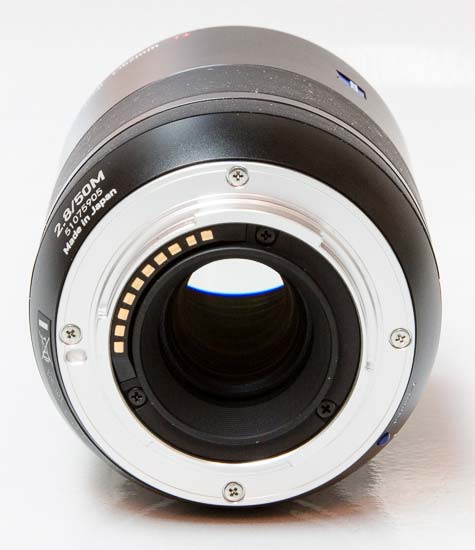 Rear of the Carl Zeiss Touit Makro Planar 2.8/50mm T* lens
Rear of the Carl Zeiss Touit Makro Planar 2.8/50mm T* lens
The Fujifilm XF version of the Carl Zeiss Touit 50mm lens that we had in for testing has a traditional aperture ring on the lens barrel, which allows you to set the aperture in 1/3 steps, complete with aperture markings on the lens barrel. The Sony E system version doesn't feature the aperture ring.
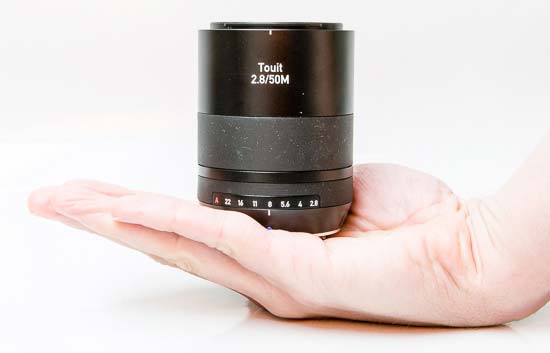 The Carl Zeiss Touit Makro Planar 2.8/50mm T* lens in-hand
The Carl Zeiss Touit Makro Planar 2.8/50mm T* lens in-hand
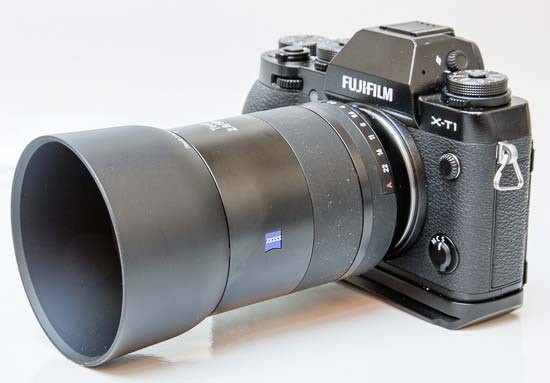 The Carl Zeiss Touit Makro Planar 2.8/50mm T* lens fitted with the supplied lens hood
The Carl Zeiss Touit Makro Planar 2.8/50mm T* lens fitted with the supplied lens hood
In terms of accessories, the lens ships with a large plastic circular shaped hood. Curiously for such a premium lens, there's no lens bag included.
Focusing
The Carl Zeiss Touit Makro Planar 2.8/50mm T* lens has an internal focusing (IF) system with a fairly quiet motor. At normal distances we found the auto-focusing to be accurate but a little hesitant even on the Fujifilm X-T1, with a noticeable lag before locking onto the subject. At macro distances, the auto-focusing becomes much slower and less accurate, so much so that we mostly switched to using manual focusing instead (a veritable pleasure on the X-T1).
Thanks to the IF mechanism the front of the lens does not rotate on focus, which is very good news for anyone looking to use the lens in conjunction with a polariser or graduated neutral density filter.
Focal Range
The Carl Zeiss Touit Makro Planar 2.8/50mm T* lens has an angle of view of 66 degrees.
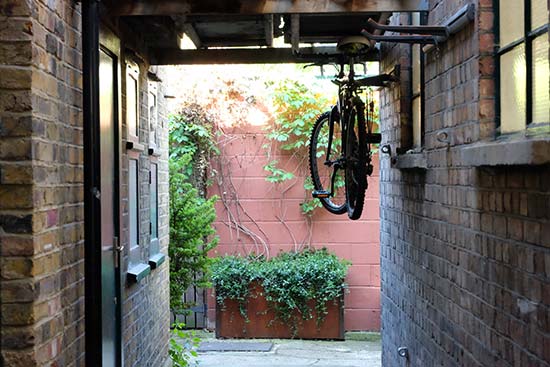
Distortion
The Carl Zeiss Touit Makro Planar 2.8/50mm T* doesn't exhibit any significant pincushion distortion, as you can see in the photo below.

Chromatic Aberrations
Chromatic aberrations, typically seen as purple or blue fringes along contrasty edges, are not really a problem with the Carl Zeiss Touit Makro Planar 2.8/50mm T* lens, as shown in the example below.
 |
Macro
At the Carl Zeiss Touit Makro Planar 2.8/50mm T*'s closest focusing distance of 18mm from the sensor plane, subjects sized 15x23mm fill the frame with a maximum reproduction ratio of 1:1. The following example illustrates how close you can get to the subject, in this case a CompactFlash card.
 Close-up performance
Close-up performance
Bokeh
Bokeh is a word used for the out-of-focus areas of a photograph, and is usually described in qualitative terms, such as smooth / creamy / harsh etc. Carl Zeiss have clearly paid attention to this aspect of lens use, employing a 9-segment diaphragm with rounded blades for pleasing bokeh. In our view, their efforts have been successful - see the examples below.
 |
 |
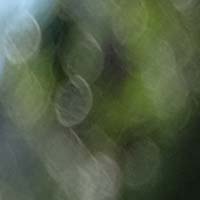 |
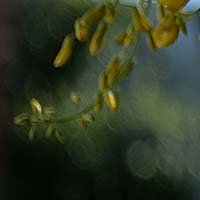 |
Sharpness
In order to show you how sharp this lens is, we are providing 100% crops on the following page.
